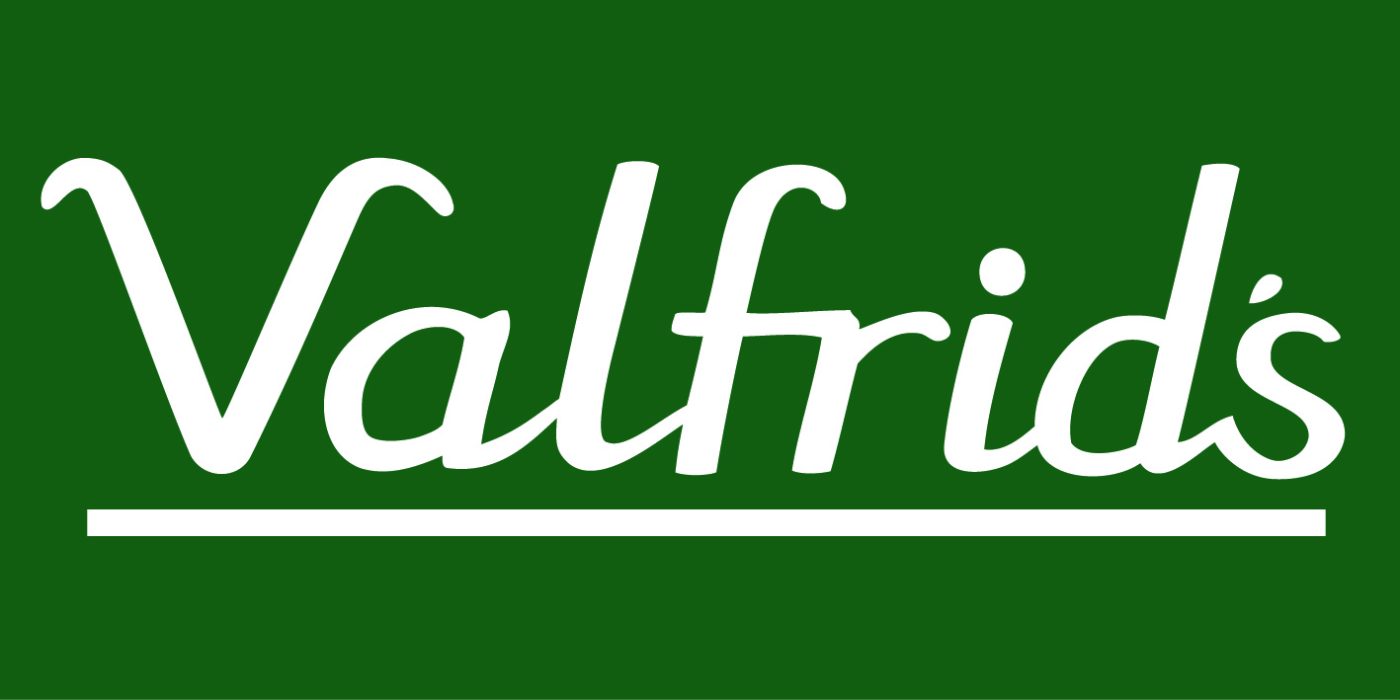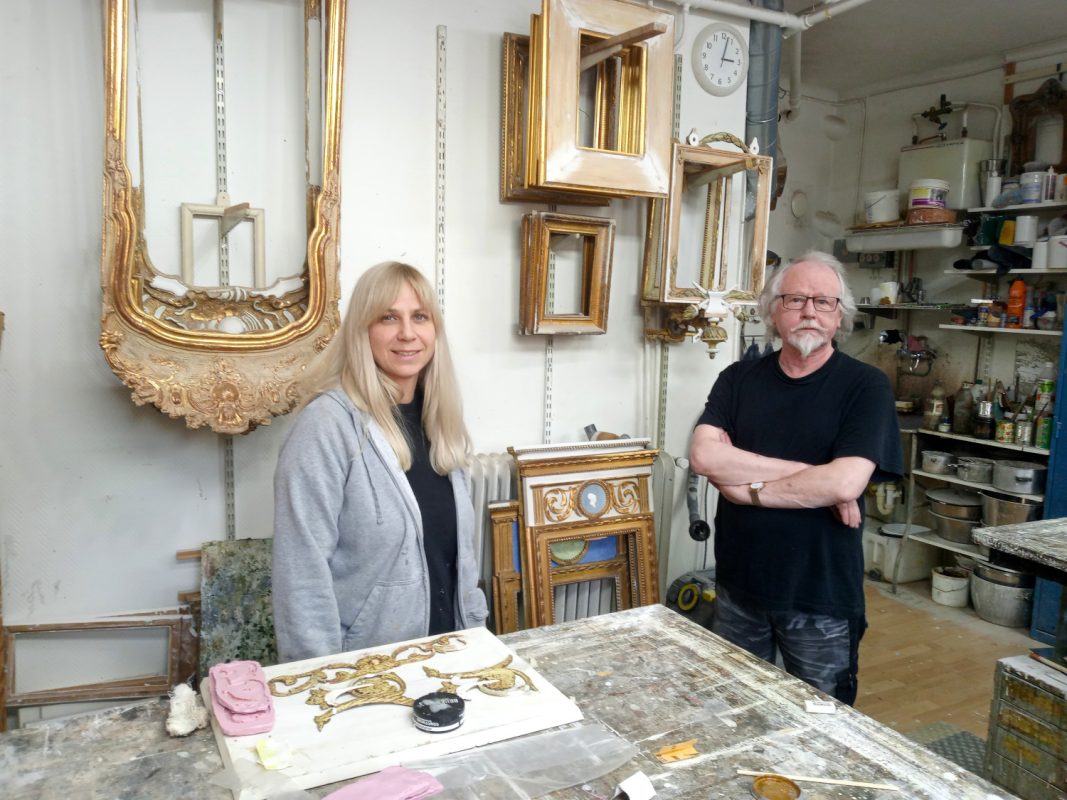Uncategorized
We visit Förgyllare Nils Löfgren Eftr and have a picture frame renovated
Gilder Nils Löfgren Eftr is one of Sweden’s oldest and most reputable gilder, with a workshop on Sibyllegatan in central Stockholm.
Jens from Valfrids visited Angelica and Kaj in their workshop for an interview – what does a gilder do? At the same time, we repaired a large gilded picture frame that was almost a century old. We also get advice on how to best take care of your gilded frames and furniture.
What does a gilder do?
It’s an incredibly fascinating profession, isn’t it? It has a history of many thousands of years! Even in the time of the pharaohs in Egypt, gilders were already working. Gold leaf similar to that still used today has been found in their graves, yes it is a little thicker but otherwise of the same type. It is traditional work, using the same techniques today as it has been for a long time; it cannot be rationalized with modern technology or machines. Perhaps it is “the second oldest profession in the world”, as Angelica and Kaj laughingly put it.
It is a genuine craft and part of our history. It’s about caring for and nurturing old things, which we at Valfrids are passionate about. But Angelica and Kaj also make new productions.
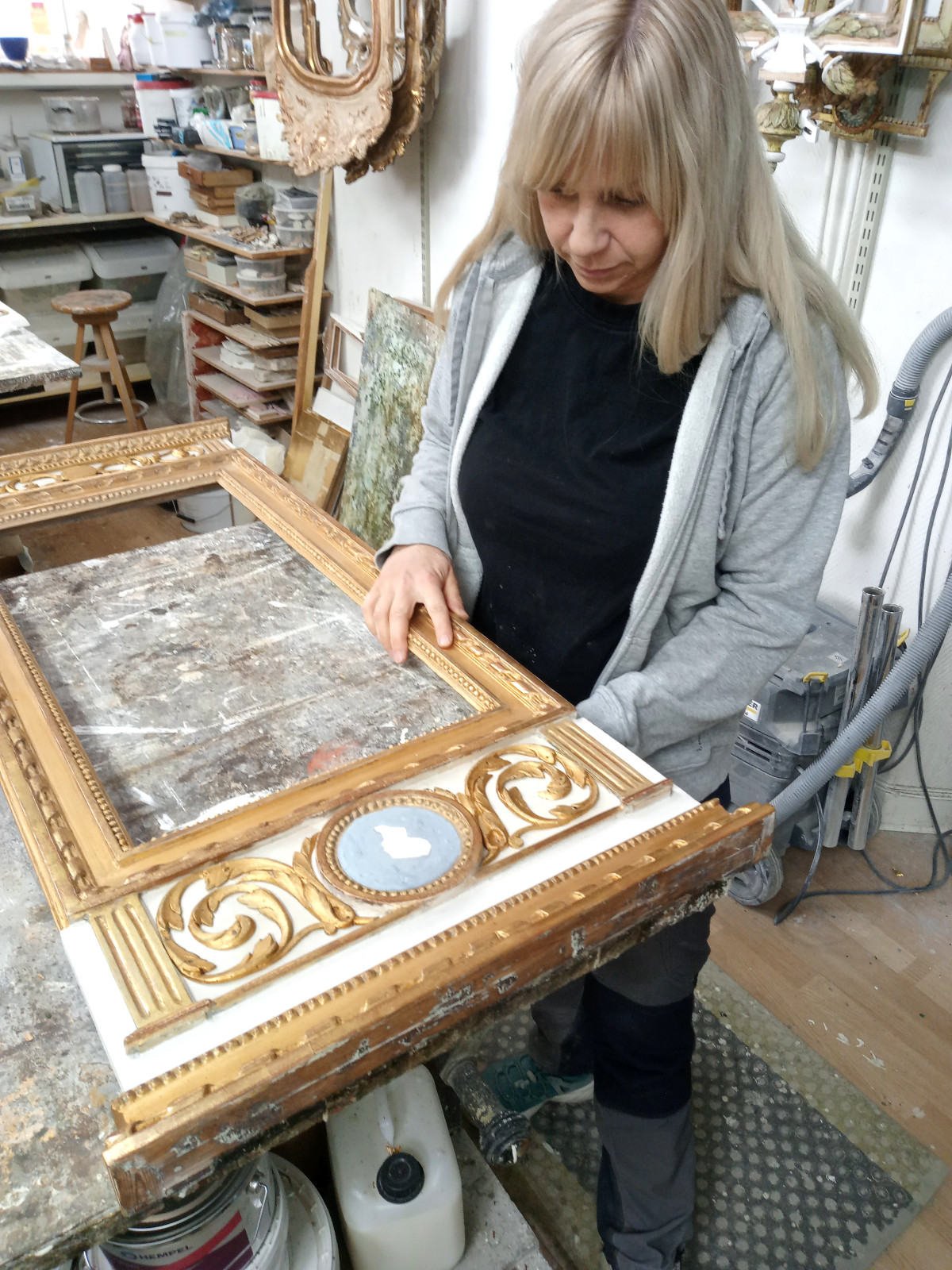
Valfrids: What is your history and how long has the company existed?
Angelica: Nils Löfgren started in 1948. Kaj started in 1977, I started in 2004.
Valfrids: How did you become a gilder?
Angelica: It’s a long story… But in short, I grew up in a carpenter’s workshop in the garage, which my father had. One day I went to a fair and saw a sculptor, and I decided I wanted to train as a sculptor. So I did, and then I took a basic course in gilding, after which I came to Nils Löfgren and went as an apprentice next to Kaj. Then I took over the company in 2017.
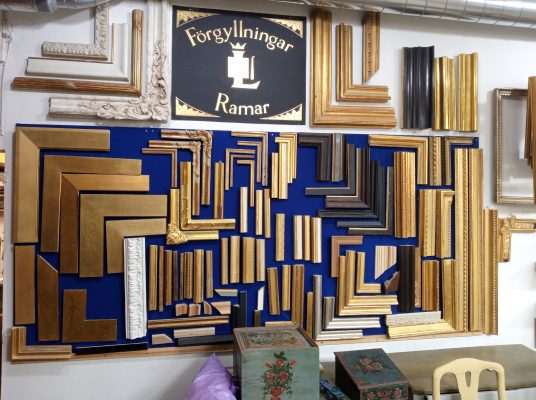
Valfrids: What kind of work do you do and for whom?
Angelica: It’s both private individuals and antique dealers. Plus public missions, e.g. for churches. And then the National Property Board. We have done some work for Stockholm Castle. Yes and it happens that we do work for interior designers, they usually want new production, but they usually want a surface with brushstrokes, so that it looks like old-fashioned painting, it gives a different feeling, more alive and not as “dead” as if you just painted with a contemporary color from a regular paint dealer.
We also do decorative painting on furniture. We also receive some orders from Denmark and Finland, often to repair stone slabs. We also repair porphyry objects.
We work with furniture, console tables, mirrors and chairs. And we make new frames in old style but also modern frames.
Sweden is a small country, there are not many craftsmen working in this field. A satisfied customer comes back, as our customers usually do.
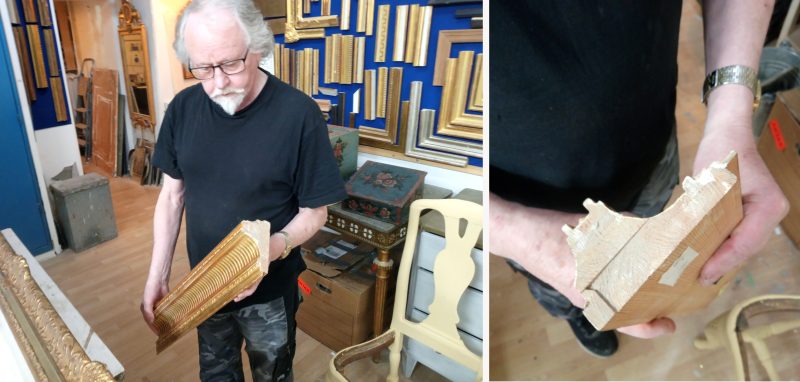
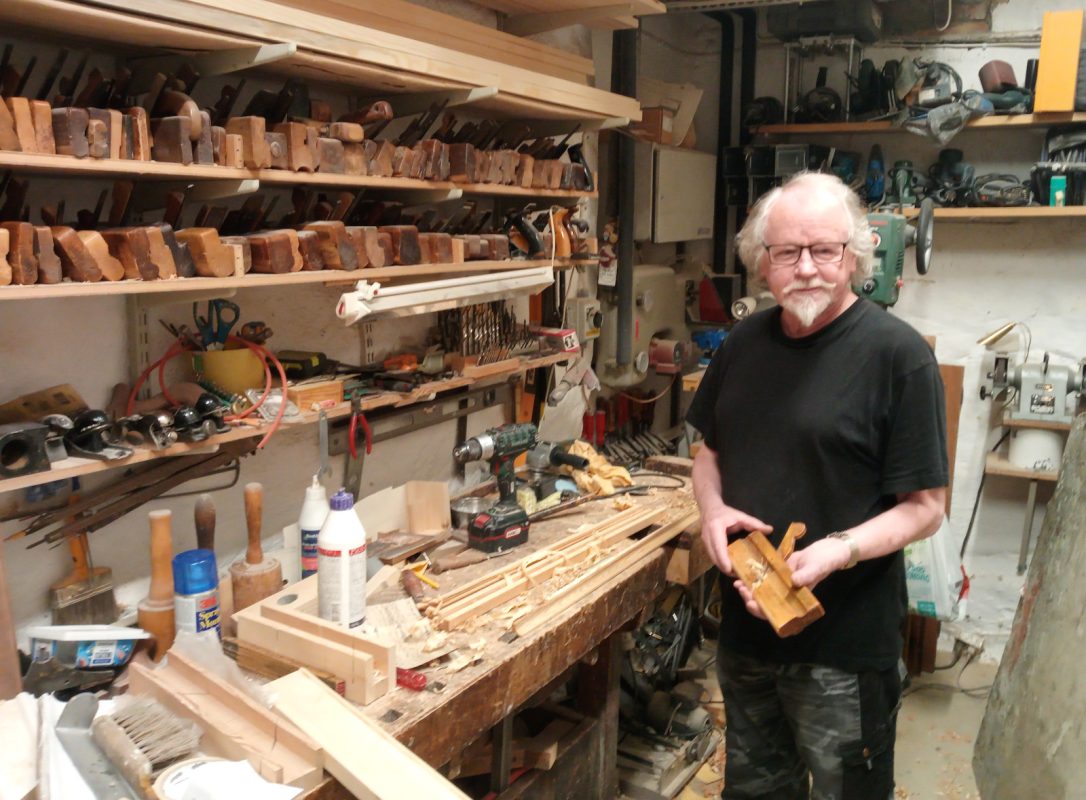
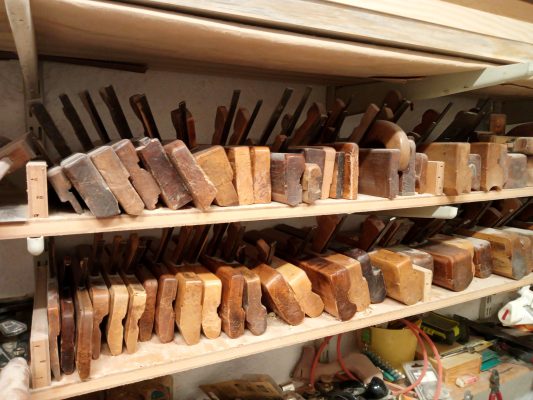
Valfrids: What tools and materials do you use?
Angelica: For example, we use polishing stones and engraving tools for hand engraving, the same tools used for centuries. We use hare glue (made from hare! – Valfrids note), bone glue and chalk. The glues are animal glues, we do not use modern glues on old objects! There are gilders who do that, but it’s not right. Who knows how long such an adhesive will last? We know that traditional adhesives can last for hundreds of years. Some of these materials are becoming difficult to obtain, such as the type of resin glue we use.
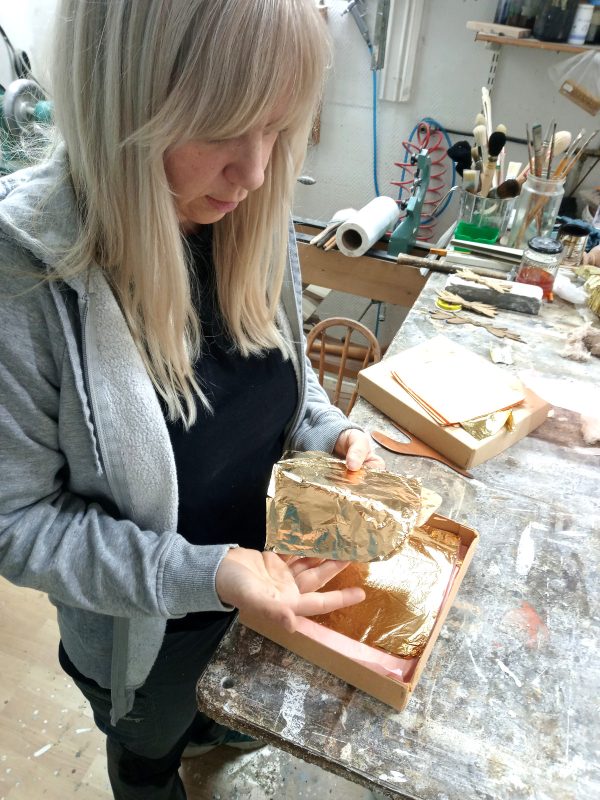
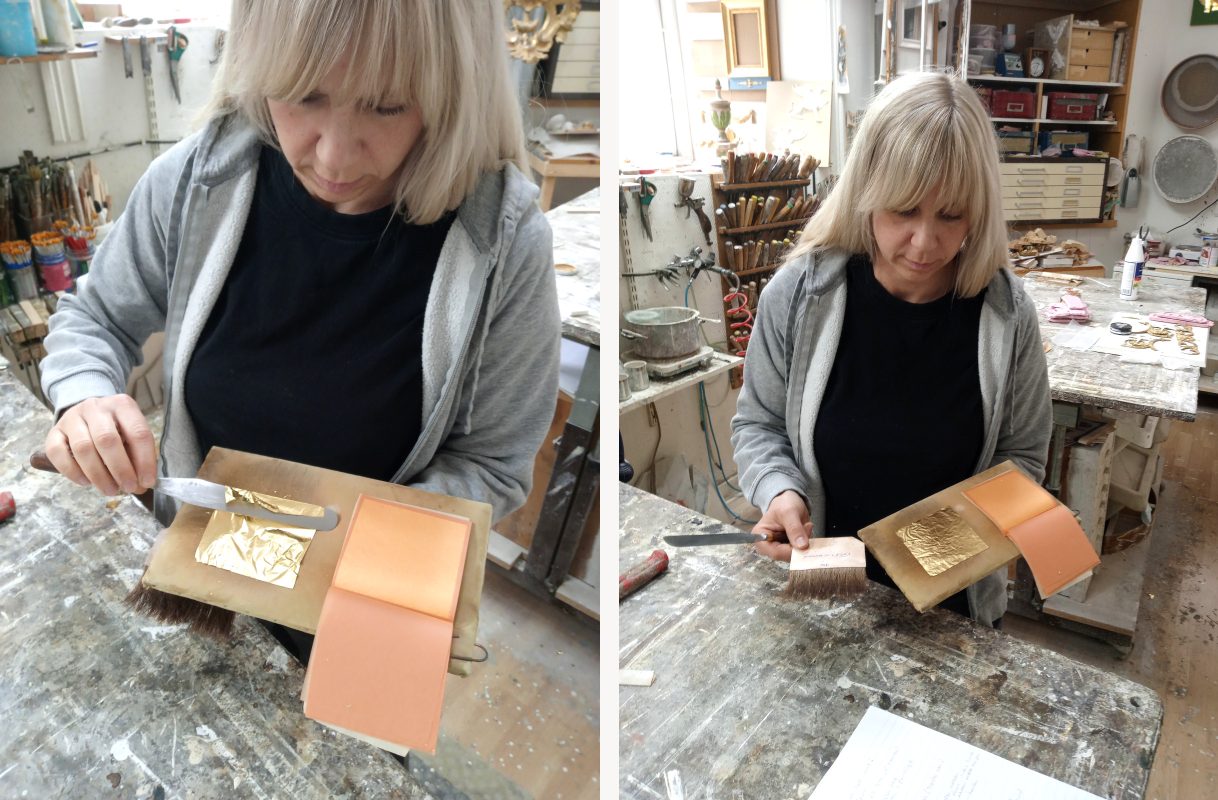
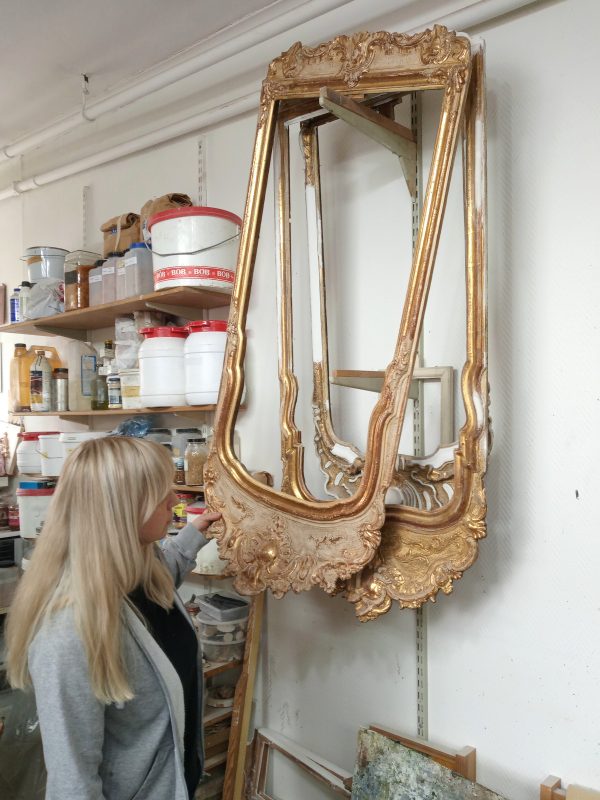
A gilder uses different molds to make ornaments and repairs (like on my frame, more on that later). Below we see molds in different materials. In the past, sulphur molds were often used, and sometimes still are. Plaster is a common mold material, the advantage is that it lasts forever. Today, silicone is also used, which doesn’t age very well, but if you don’t need to save the mold, it’s still possible.
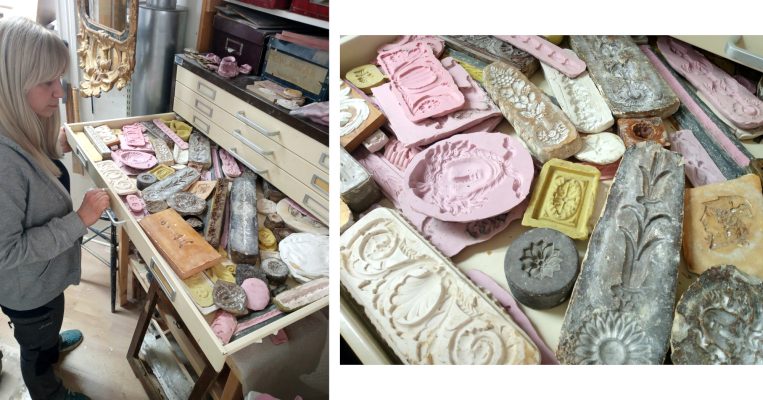
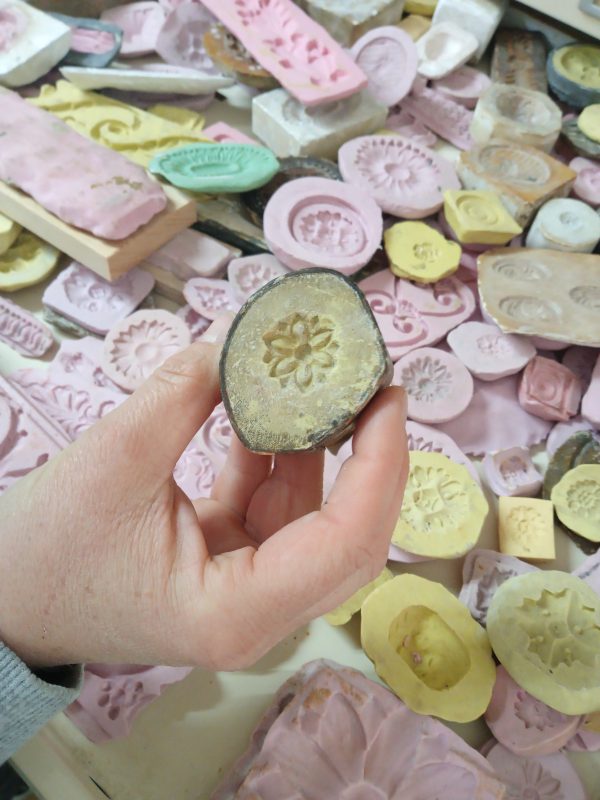
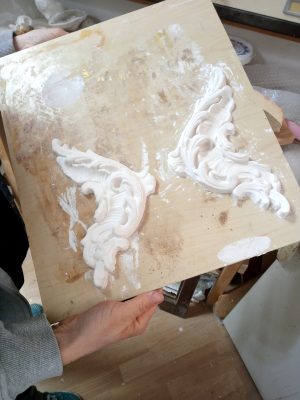
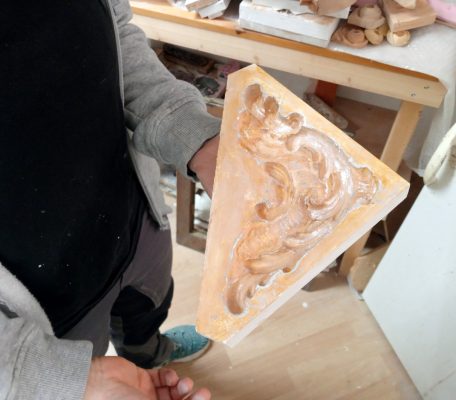
They also work in wood. Below Angelica has carved a wooden ornament (Gustavian).
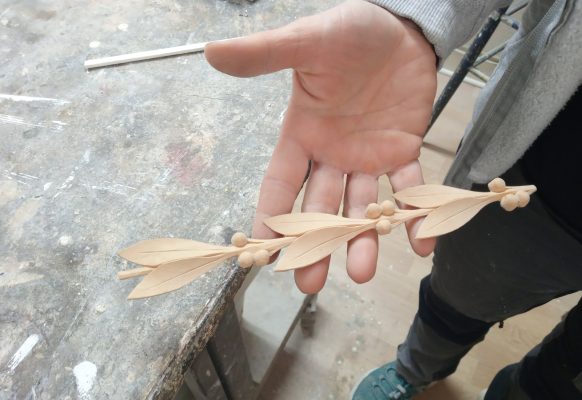
How to take care of gilded objects?
Valfrids: How to take care of your gilded objects? For example, how do you clean them?
Angelica and Kaj: Actually, you shouldn’t touch them, just use a feather duster! No water! If necessary, submit to an expert! So no wet rags or moisture. It is good to “dust” often, i.e. dry dust.
My large gilded picture frame – how was it restored?

I bought the painting above at Stockholms Auktionsverk. It was painted by Gideon Börje in the early 1900s. It is a magnificent painting, very large and eye-catching, photos do not do it justice. Before it came to me, it had suffered an accident. At some point, the metal wire on which it was hanging probably broke and it fell to the floor. The corners were crushed. A previous attempt at repair was not very well done. I bought it in such condition. How could this damage be repaired?
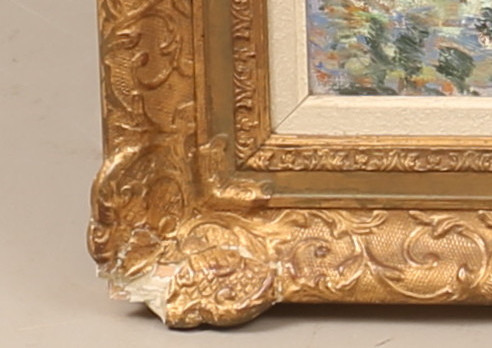
Valfrids: How did you restore my frame?
Angelica: We did molding on the whole corners. Then we made new ornamenta in a mold (made of silicone). After that we fit in the new pastel layer.
Valfrids: How do you “fit it in”? That sounds difficult.
Angelica: It is to adapt it to the pattern. Then we putty the joint together, adjust edges, adjust levels.
Then we put poliment on it. In your case, maroon. It is a mixture of bolus chalk (red chalk) and resin glue. It is brushed on. Then bronze powder is added, which is polished on the tops.
Your frame is bronzed, but other frames also use hammered metal and gold.
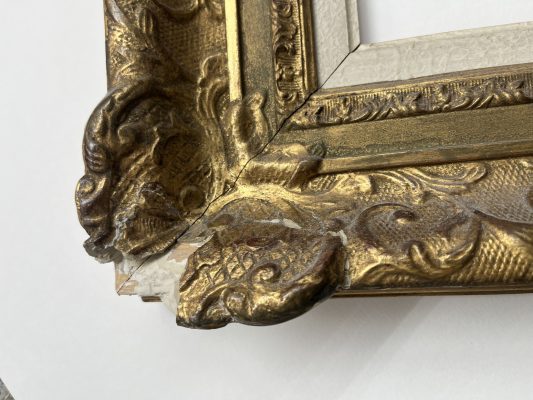
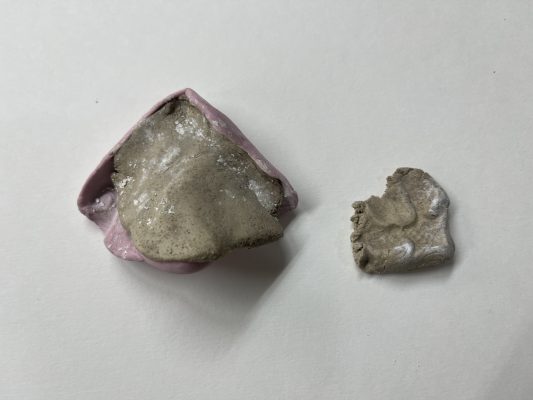
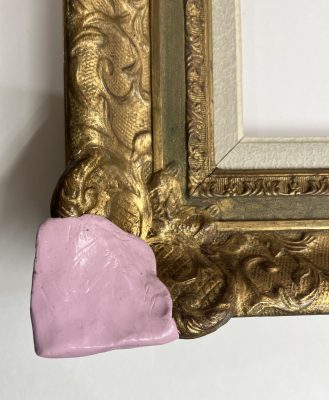
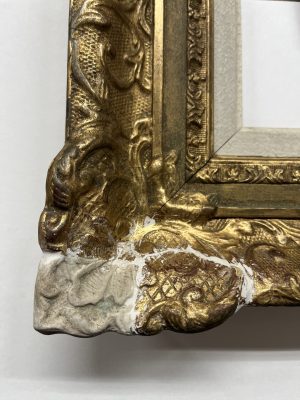
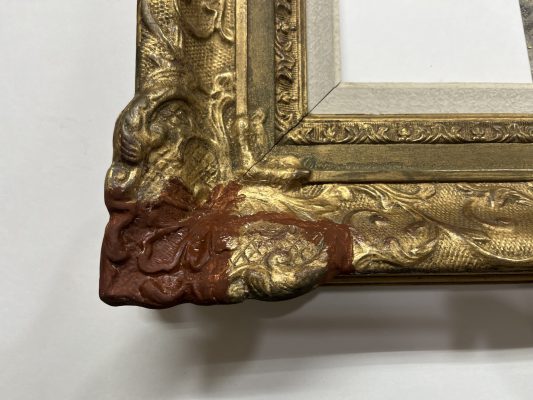
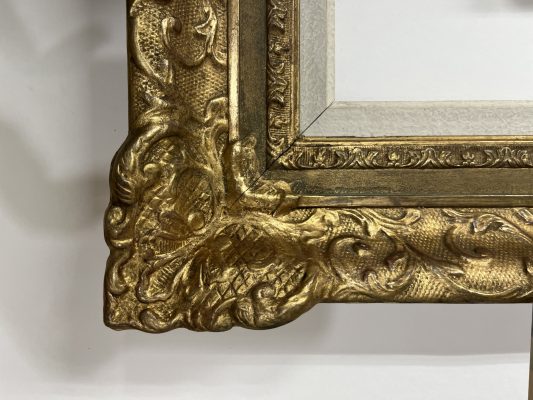
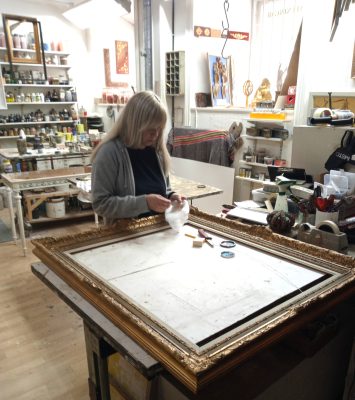
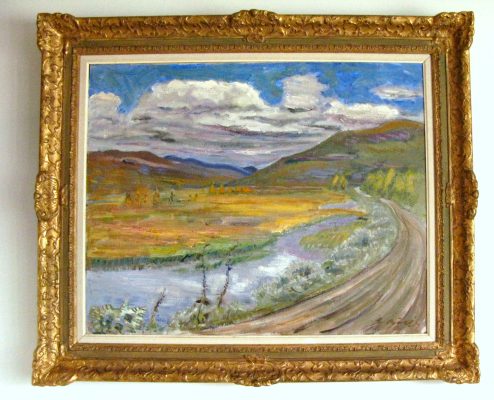
Many thanks to Kaj and Angelica at AB Förgyllare Nils Löfgren Eftr, at Sibyllegatan 83 in Stockholm.
If you want to get in touch with them, you can find their website here: https://forgyllarelofgren.se/
Telephone 08 6610885
